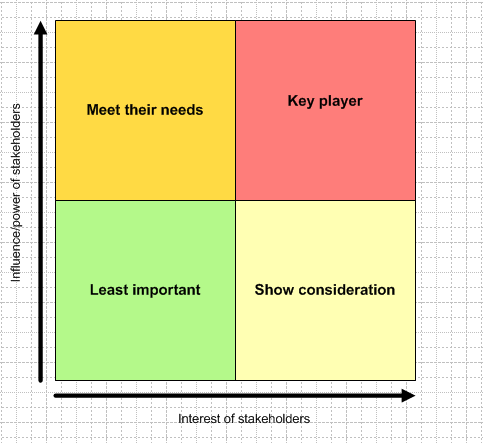top of page
SOCIAL ASPECTS
Preparation phase
By Susana Toboso (UAB), Xavier Gabarrell (UAB), Gara Villalba (UAB), Cristina Madrid (UAB), Ramiro Gonzalez (UAB), Caroline BINI (Groupe One)
OPERATIONAL STEPS OF THE SOCIAL ANALYSIS
A wide range of methodologies – quantitative ones and qualitative ones – are used for social analysis. In this case, we advise using different methodologies at different stages of the project. See figure below for a better understanding.
HOW?
Stakeholder mapping
Collective workshop
The project leader organises a workshop to develop a matrix of the key stakeholders of the pilot process with his/her team: potential rooftop greenhouse (RTG) users, current users & owners of the building, local authorities, neighbours, etc.
How to do the mapping workshop:
In the centre, write the pilot vision. Why was this pilot created? “Why” according to Andreas Gaber (see this video of Simon Sinek
Identify all the stakeholders of your project.
Identify all the existing flows between your project and the stakeholders. Identify all the existing flows among the stakeholders. Are they monetary, informational (one-way) or collaborative (two-way) flows?
Be creative and think about all the new flows you could create among all these entities.

BUILD A MATRIX
List all the stakeholders in a table. Then, identify their needs and their power (figure below) and select who are the key players; these key players will be the most important targets of your communication/actions, in order to maximise the success of the RTG implementation. They should be invited to the participatory process (see below).

STAKEHOLDER ENGAGEMENT STRATEGY
Write down an action plan based on the mapping exercise for efficient stakeholder involvement, e.g. bilateral consultations, public events, invitation to the participatory process, etc.
Prepare a consumption pattern questionnaire that will characterise the metabolic patterns of the residents. It will help to know the actual food requirements of the residents and plan the crops accordingly in the greenhouse.
(e.g. https://doi.org/10.5565/ddd.uab.cat/226152)

Participatory process
The participatory process will analyse whether implementing a rooftop greenhouse (RTG) is relevant. We propose the world cafe method for stakeholders to agree on what they want. The world cafe is based on a constructive conversation related to critical questions and collaborative learning. It assumes that the knowledge that we are searching for is already present (Fouché and Light, 2011). This method is particularly useful to make sure that a topic is investigated from different perspectives and that everyone in the room is contributing to the conversation. The method is based on several rounds of conversations in small groups (4-5 people) for different opinions and perspectives to be expressed in a relaxed environment. It can be employed to gather the residents’ preferences for the implementation of food, energy, or/and water, and greenhouse systems on the roofs. The essence of the methodology lies in conveying the message that ideas are being shared, in a competition-free manner, simply by exploring possibilities (Brown, 2005).
The main steps of the methodology are as follows:
Invite participants to take part in a face-to-face session
Organise a working team to prepare the session (4/5 people) depending on the number of participants. This team will prepare the topics to be discussed in each small-group conversation, technical support, and the hosts will be in charge of coordinating the groups and noting down all the comments
Prepare the discussion tables and the place where the discussion will take place so that all the participants feel comfortable, with 4/5 people table and a projector to show the questions. All participants will sit at all tables, answer all questions, and mix with all other participants to reach more richness and criticism in the answers. One host table will collect all opinions, and the discussion time will be no longer than 15 minutes. The hosts will be in charge of collecting all information, and this information will be coded and analysed later.
(https://bcnroc.ajuntament.barcelona.cat/jspui/bitstream/11703/116237/1/Cobertes_Mosaic.pdf)


More complex urban planning methodologies can be applied, e.g. the Roof Mosaic methodology (Toboso-Chavero et al., 2019).
This methodology combines life cycle assessment with two rooftop guidelines. It was applied to a neighbourhood. The aim is to analyse the technical feasibility and environmental implications of producing food and energy and harvesting rainwater on rooftops through different combinations at different scales. See an example of this methodology in the paper published in the Journal of Industrial Ecology, https://doi.org/10.1111/jiec.12829.
The Roof Mosaic can be combined with the study of the metabolic pattern using the Multi-Scale Integrated Analysis of Societal and Ecosystem Metabolism (MuSIASEM) of the area under study and different participatory processes, as shown in Figure II.10. 3. This methodology was applied to housing estates (Toboso-Chavero et al., 2020).
Other multi criteria analyses can also be performed, e.g. a sustainability analysis using the Integrated Value Model for Sustainability Assessment (MIVES). MIVES is a Multi-Criteria Decision Making (MCDM) methodology based on the Multi-Attribute Utility Theory (MAUT) with a value function concept, designed to perform quantitative and objective assessments. See an example of this methodology in the paper published in Science of Total Environment
https://doi.org/10.1016/j.scitotenv.2018.01.191.
bottom of page




